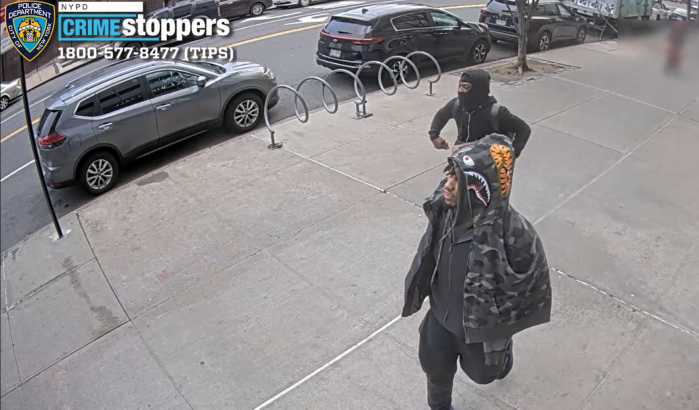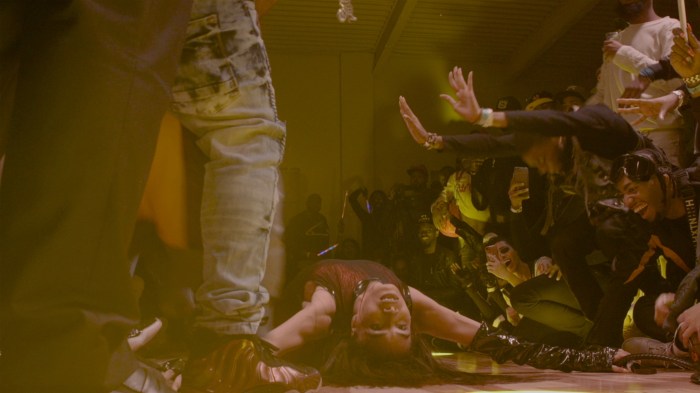By Douglas Fricke
Almost 2,000 protestors detained by police for demonstrating during the Republican National Convention in August may have been held in a contaminated facility, an environmental lawyer has charged.
Joel Kupferman, an attorney with the New York Environmental Law and Justice Project, said that “scores and scores” of detainees have complained of skin rashes and respiratory disorders after being held at the former bus depot at Pier 57 in Chelsea. Kupferman blames the maladies on motor oil and transmission fluid that dripped from parked buses over many years, soaking into concrete floors, and possible asbestos contamination as well.
A spokesperson for New York City Transit, which turned the site over to the Hudson River Park Trust last year for redevelopment into a cultural or recreational facility, denied the claims. “We handed that depot over clean,” spokesperson Charles Seaton said. He acknowledged that some chemicals are present at the site, but would not call them contaminants. “It was a bus facility, so there was bound to be oil around,” Seaton said. “Oil and transmission fluid in a bus facility is not contamination.” He said his agency knew nothing of asbestos particles in the air.
The structure, at W. 16th St., was built in the 1950s as a terminal for passenger and cargo ships. It was converted to a bus garage after the shipping company moved out in the 1960s. Last year the buses were shifted to a depot in Harlem, leaving the hulking building empty.
The vacant building found a temporary new life in August, when the New York Police Department turned it into a holding facility for about a week. “We made over 1,800 arrests [during the convention] and everyone we arrested went to Pier 57,” said New York Police Department spokesperson Sgt. Kevin Hayes.
Attorneys at the New York Environmental Law and Justice Project have sent clothing worn by detainees held at the site to a lab for testing.
“We are quite certain what’s going to show up in the clothing due to the prolonged exposure the detainees had while sitting on the contaminant-laden floor,” said Kupferman. He said that he expects the analysis to find traces of diesel fuel and transmission fluid.
Paul J. Browne, the Police Department’s deputy commissioner for public information, called Kupferman’s allegations “nonsense.” Browne said that oil contamination is confined to the end of the building closest to the street and detainees were not housed in that section. The contaminated area, he said, was used to park Corrections Department vans used for hauling the detainees from demonstrations and, after several hours, downtown to Central Booking at 100 Centre St., where they were processed, held for an additional length of time and eventually released.
Browne added that the charge of asbestos contamination was a fabrication. “We tested it before and after,” he said.
But Kupferman said that he does not trust the Police Department’s test results. “We question their ability to find asbestos,” said Kupferman, adding that the New York Environmental Law and Justice Project found traces of asbestos from the World Trade Center on supposedly decontaminated fire trucks eight months after Sept. 11.
In written response to a request filed by Kupferman under the New York Freedom of Information Law, or FOIL, the N.Y.P.D. said it could not release data on testing done at the former depot because such records “if disclosed would interfere with law enforcement investigations or judicial proceedings.” The statement did not specify the nature of the investigations or proceedings.
Kupferman said he filed four other FOIL requests: one each to the city Department of Health, the city Parks Department, the Public Employees Safety Health Bureau of the state Department of Labor and H.R.P.T. He said the Health and Parks departments said they had no records of contamination at the site; the Labor department is still searching its files, while the park’s operating agency, H.R.P.T., has not replied.
Jim Flynn, an amateur photographer, was taking pictures of antiwar demonstrators on Aug. 31 who planned to march from Ground Zero to Madison Sq. Garden. But the marchers, who did not have a permit for the protest, were halted at police barricades near Fulton St. Two hundred twenty-seven of the protestors were arrested and transported to the pier and Flynn was swept up with them.
Flynn said that he did not notice any signs of contamination at the former bus depot. “As far as the chemicals in there, I don’t know,” Flynn said. He added that in his opinion conditions at Pier 57, contaminated or not, were still better than Central Booking. Fortunately for Flynn, his holding pen may have been better than others. Other individuals held at Pier 57 have said their pens did have oily floors and that they did not want to sit or lie down on them because of it.
Kupferman said that at some point police finally provided carpeting to cover the unsanitary floors.
Flynn said he was held at Pier 57 from about 6 p.m. until about 3 a.m. the following morning. There are reports, however, of others being held at the pier significantly longer. The pier’s conditions and the lengthy holding times earned it the moniker “Guantanamo on the Hudson” during the Republican National Convention.
Kupferman has said that government agencies must have known that the building was contaminated by oil and transmission fluid spills.
A March 2001 report submitted to the New York State Department of Transportation by an engineering firm found that plainly visible oil stains were present to such a degree that the oil was seeping through joints in the concrete deck.
And another engineering study of the site, done in April 2004 by a Manhattan firm hired by H.R.P.T., makes reference to a second document, which it describes as “an environmental report” on the facility. Chris Martin, H.R.P.T. vice president for public affairs, would not confirm the existence of the environmental report, referring queries to the Police Department. “We don’t comment on pending litigation,” said Martin.


































